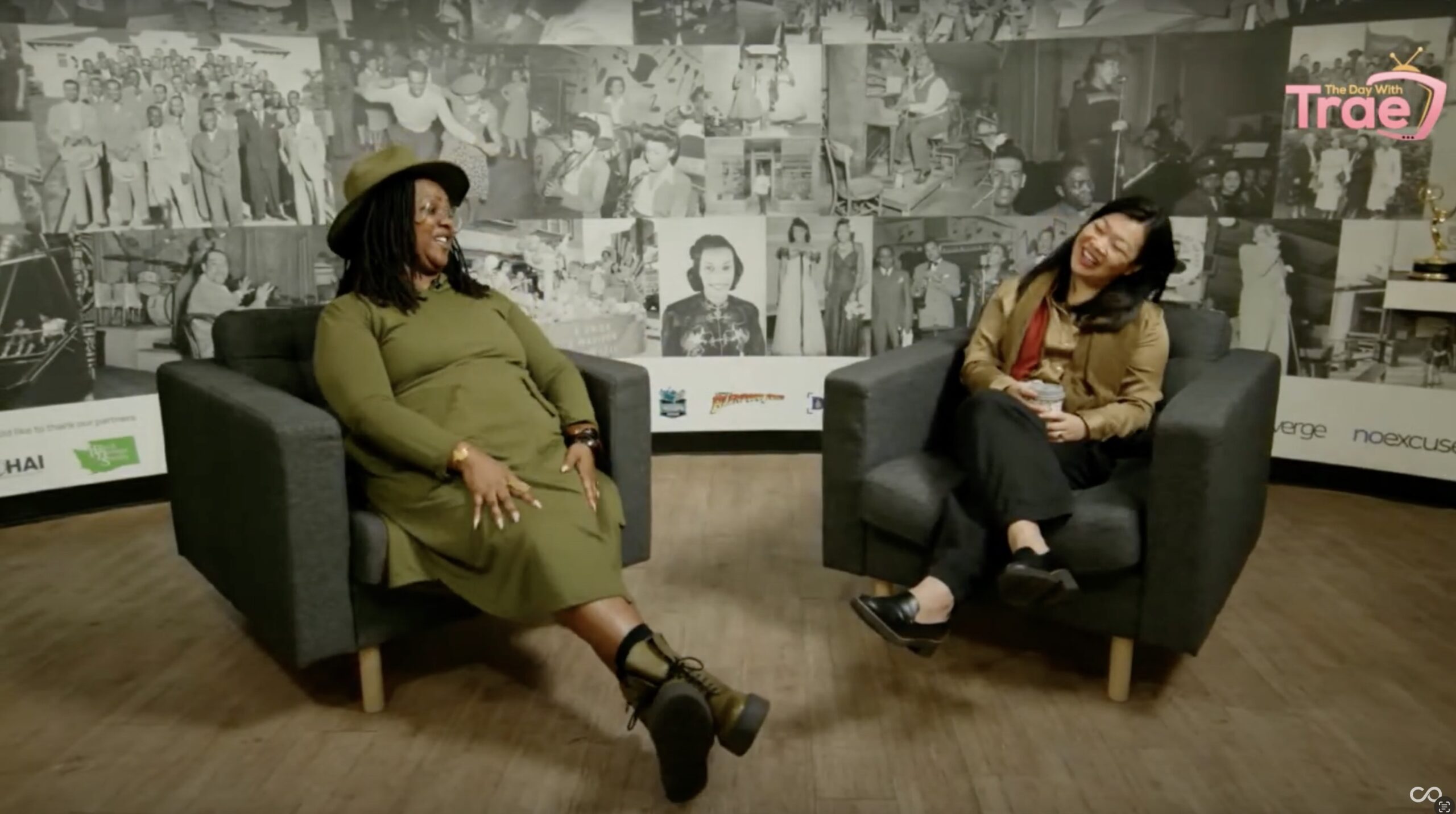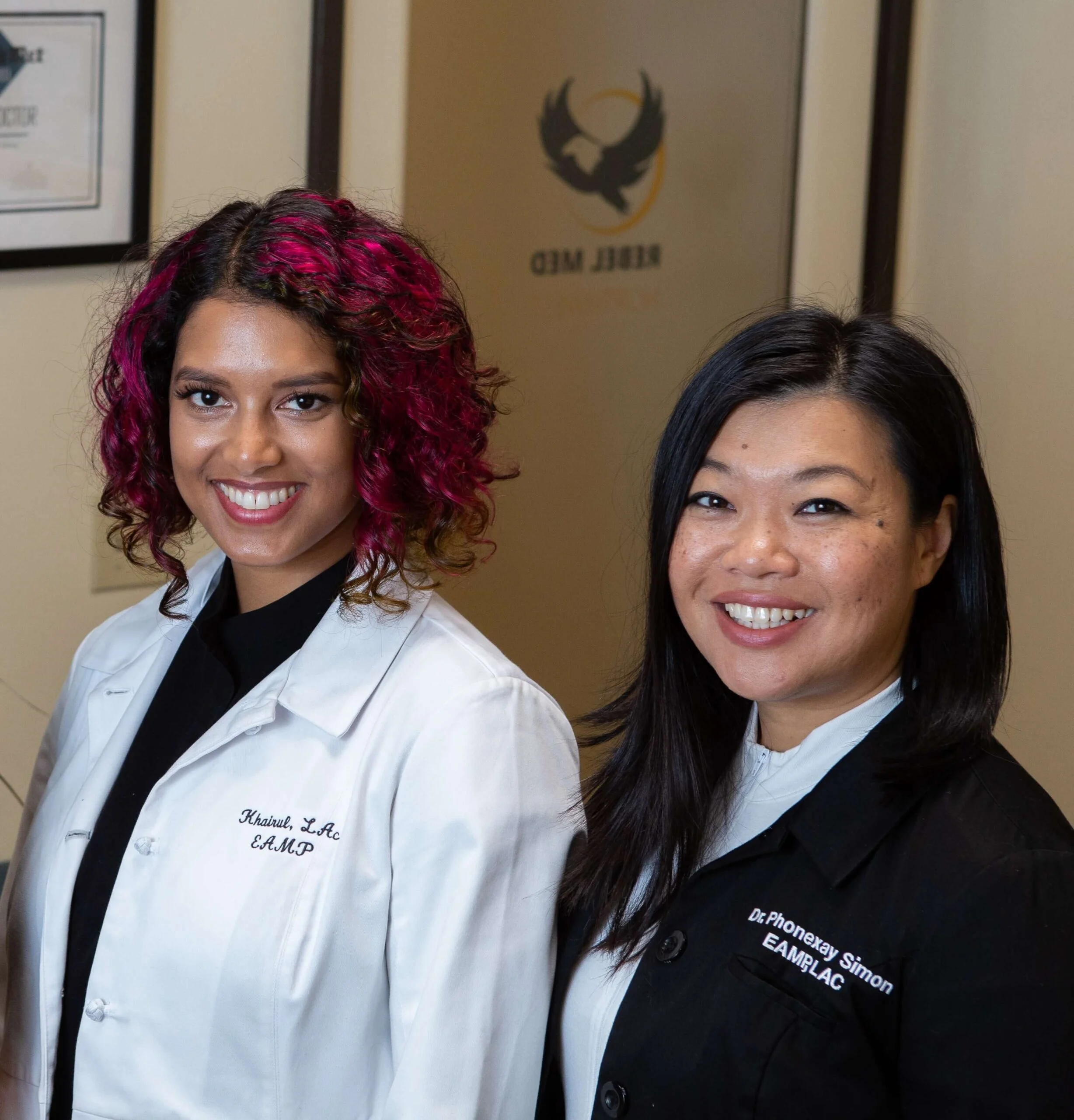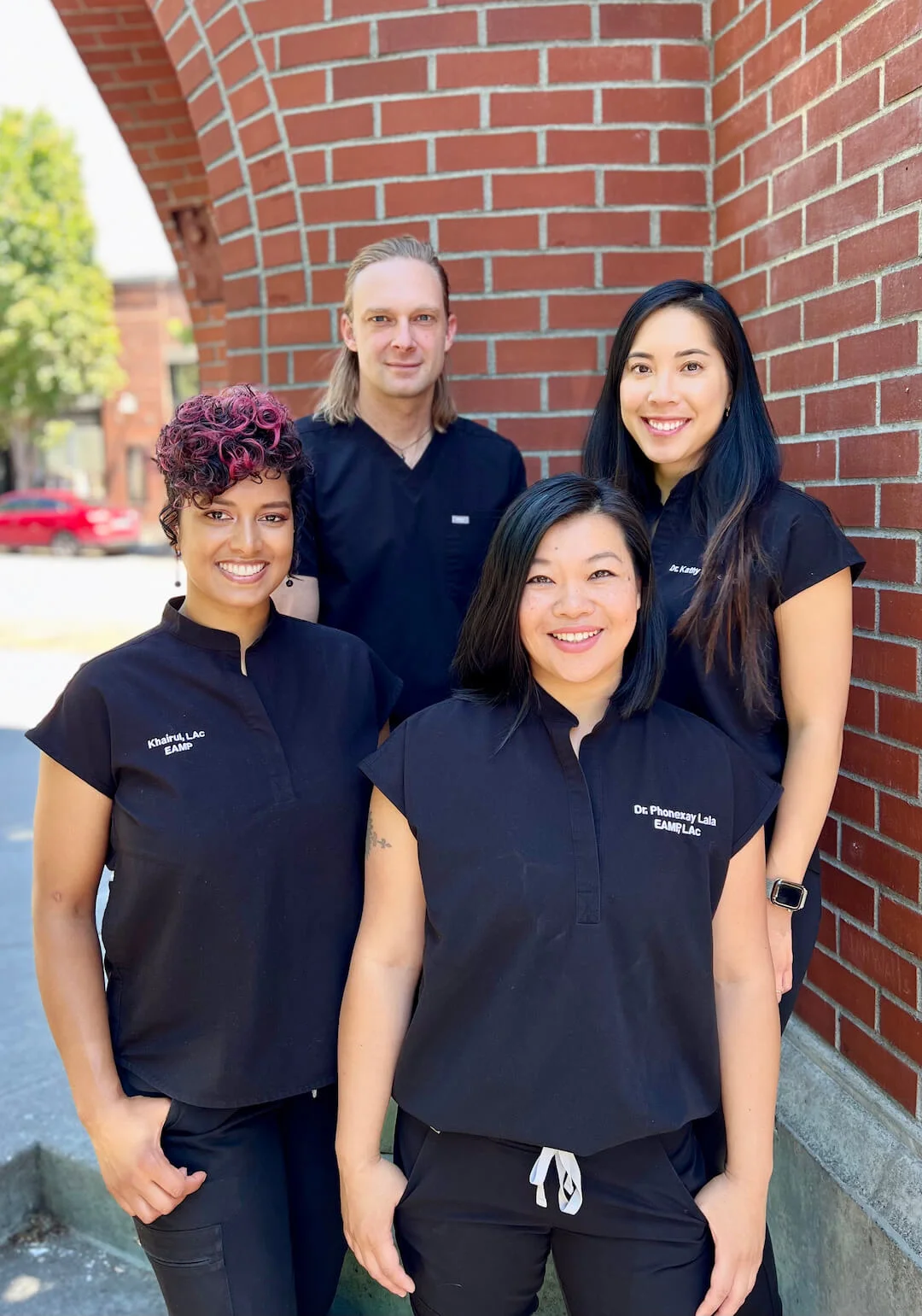Dr. Phonexay Simon Interview on "The Day with Trae" Transcript from Video Interview Below, (my…
Rebel Med Northwest Acupuncturist Dr. Brendon Fegan discusses how he uses acupuncture to help with pain management in Ballard.
A famous Acupuncture doctor once said, “ Bu tong ze tong, tong ze bu tong” which translates into English as “If there is no pain, there is movement, if there is pain, there is no movement”. This applies both to the physical body of a person who is in pain and also to the Traditional Chinese Medical understanding of using acupuncture to help with pain management.

The Traditional Chinese Medical explanation of acupuncture analgesia is that pain only occurs when there is a stagnation or blockage, and that removing the blockage through acupuncture or herbal medicine will alleviate the pain. The blockage prevents the Qi and Blood from circulating, which creates pain and a loss of nourishment to the stagnated area. This has led to the adage,“running water does not rust” due to the observation that running water does not become foul like a stagnant pond and people who stay active through out their lives maintain better health. Once the proper circulation of Qi and Blood has been restored, the pain will naturally leave and the body will heal itself. This includes emotional pain as well because traditional medicine does not differentiate the mind from the body. Emotional pain can be caused from an emotional or spiritual blockage, Dr. Brendon Fegan uses acupuncture to help with pain management, acting on the mind-body to resolve pain and restore harmony and balance.
Acupuncture to help with Pain Management
From a physiological point of view, acupuncture has many ways that it can alleviate pain. Some of the most common explanations are gate-control theory, endorphin release, neurological stimulation, connective tissue and circulation changes, and the simple act of being cared for. Gate-control theory is the fact that acupuncture stimulates specific nerve fibers that provide faster signaling than pain sensitive nerve fibers. This faster signaling gets to the body’s perception faster and overrides the pain signal leading to a reduction in pain sensation. Acupuncture is also known to release a number of neurotransmitters in the body such as endorphins and enkephalins which serve as the body’s natural pain killers. Whenever an acupuncture needle is inserted into the body, it is stimulated by the acupuncturist to produce a “Qi” response. This response indicates that the connective tissue of the area has been ever so slightly remodeled by the acupuncture needle and because the connective tissue flows in planes analogous to the acupuncture meridians, downstream effects along the whole tissue plane can be felt through needling. Often this leads to greater circulation and normalized metabolism in the area. If the pain was caused due to soft tissue misalignment, then it is suggested to use acupuncture to help with pain management techniques.

In some patients with chronic pain, in which acupuncture has been researched to be effective for, there is not actually a physical cause of their pain. Instead, their body has become so accustomed to pain that it has remodeled its neural networks to always feel pain in the absence of a stimulus, or to feel pain instead of another sensation like cold or heat. This is very hard to treat with conventional means such as pain killers, but acupuncture has been shown to help reverse and normalize this process leading to long term and enduring reductions in chronic pain scores. Finally, one of the elements most missing from conventional medical practice is the human connection between doctor and patient. The ever increasing pressure for sterile hyper-rational medicine has led some people to believe that the human connection is only a placebo, an artifact of treatment and not worthy of attention. This is not the case in reality. The human connection is one of the most healing factors in medicine. Because traditional medicines like TCM and acupuncture are holistic, this connection is never forgotten and the practitioners are actually encouraged to develop their humanity through mindfulness and meditation.




Comments (0)